You can’t scroll through TikTok or browse the health aisle these days without seeing nootropics everywhere. From college students hoping to ace finals to busy professionals trying to outsmart the competition, brain-boosting supplements are hotter than ever. But while short-term focus and memory boosts sound great, a big question lingers: What actually happens if you use nootropics long-term? Are they safe, or could you be trading quick brain gains for future problems?
This article dives into the real research behind the long-term effects of nootropic use—looking at both natural and synthetic options, what we know so far, and the gaps that still exist.

Why Are People Turning to Nootropics?
Life is faster, more competitive, and way more digital than ever before. Whether you’re hustling in a tech startup, going back to school, or just trying to keep up with modern distractions, the promise of enhanced focus, memory, and even mood is hard to resist. Nootropics offer an edge that coffee can’t match—at least, that’s the hope.
What Counts as a Nootropic?
The term “nootropic” gets thrown around a lot. Originally, it meant any compound that can safely improve cognitive function—think memory, creativity, motivation, and attention—without serious side effects. Now, it covers everything from herbal brain boosters to lab-designed smart drugs and everything in between.
Understanding Nootropics: Natural vs. Synthetic
Before we get into long-term effects, it’s important to know what we’re actually talking about.
Common Natural Nootropics
Natural nootropics usually come from herbs, mushrooms, or nutrients that support brain health. Some of the most popular include:
-
Bacopa monnieri: Used in Ayurveda for memory and learning.
-
Lion’s mane mushroom: Supports nerve growth and cognitive clarity.
-
Rhodiola rosea: Fights mental fatigue and stress.
-
Ginkgo biloba: May improve blood flow and memory.
-
L-theanine: Found in green tea, promotes relaxed alertness.
-
Panax ginseng: Used for energy and mental performance.
-
Omega-3 fatty acids: Important for brain cell structure and function.
These are generally considered safe for most people, especially when used as directed.
Popular Synthetic Smart Drugs
On the flip side, you’ve got lab-made synthetic nootropics. The most well-known are:
-
Racetams (like piracetam, aniracetam): Often used for memory and learning.
-
Modafinil: A prescription drug for narcolepsy that’s also used (off-label) for wakefulness and cognitive enhancement.
-
Noopept: Claimed to improve memory and learning speed.
-
Adrafinil, phenylpiracetam, and others: Gaining popularity in the biohacker world.
Synthetic nootropics tend to have more potent effects—but they also carry more unknowns when it comes to long-term use.

What Happens When You Use Nootropics Over Time?
It’s easy to find stories of people who feel sharper and more motivated after a week or two of nootropics. But what about six months, a year, or longer?
Short-Term Benefits and the Appeal of Cognitive Enhancement
In the short term, many nootropics do exactly what they promise:
-
Boost alertness and energy
-
Improve working memory and recall
-
Reduce brain fog and mental fatigue
-
Help you stay focused and productive, especially during stressful periods
For busy students or professionals, that’s incredibly appealing. Natural nootropics like L-theanine and lion’s mane are often gentle and even support overall wellness. Synthetic nootropics like modafinil or racetams are famous for giving users a feeling of “limitless” focus or all-night productivity.
The Big Question—Are They Safe for the Long Haul?
And here’s where it gets complicated. While most people tolerate natural nootropics well for weeks or months, the long-term effects—especially of synthetics—are way less understood. Why? Because most research studies are short (a few weeks to a few months), and long-term safety data is still limited.
A supplement or smart drug that’s fine for a month might not be risk-free after years of use. That’s why it’s crucial to understand the research—and the risks.
Research on the Long-Term Effects of Nootropic Use
So, what do scientists actually know? Is long-term nootropic use a smart way to invest in your brain—or a gamble with unknown odds?
What Science Says About Safety and Effectiveness
-
Natural nootropics: Studies on herbs like bacopa, lion’s mane, and rhodiola often show safety and cognitive benefits for periods up to 12–24 weeks, sometimes longer. For example, long-term bacopa use is associated with improved memory and minimal side effects.
-
Synthetic nootropics: The story is different. Research on racetams and modafinil mostly covers short periods (weeks to a few months). Some evidence suggests that prolonged use can lead to tolerance (needing higher doses for the same effect) or even dependence in rare cases.
-
Omega-3s: These have some of the best long-term data for cognitive health, especially in aging and dementia prevention.
Gaps and Limitations in Current Research
-
Few long-term studies: Most clinical trials are short, so side effects or problems that develop slowly are often missed.
-
Limited population diversity: Many studies use young, healthy adults—not teens, older adults, or those with health issues.
-
Unregulated supplements: The quality, purity, and dose of over-the-counter nootropics can vary a lot, making safety harder to track.
Bottom line: The long-term effects of many nootropics are still a mystery—especially the synthetic ones. More research is needed to understand the risks and benefits over years, not just weeks.
Potential Risks and Side Effects from Long-Term Nootropic Use
While some people use nootropics for years without problems, others report side effects or notice diminishing returns. It’s not always predictable—and some risks are worth knowing up front.
Tolerance, Dependence, and Withdrawal
-
Tolerance: Over time, your brain can adapt to certain nootropics—especially synthetic stimulants—so you need higher doses to get the same effect. This is common with modafinil and racetams.
-
Dependence: Rare, but possible, especially if you use strong synthetics every day without breaks.
-
Withdrawal: Stopping some nootropics suddenly (especially if you’ve used them for a long time) can cause brain fog, low mood, and fatigue.
Side Effects and Health Risks
-
Sleep problems: Overusing nootropics that boost alertness can disrupt sleep and make you more anxious or irritable.
-
Digestive issues: Some users get nausea or stomach aches.
-
Headaches: Especially with racetams and when choline is low.
-
Heart health: Synthetic nootropics with stimulant effects can raise blood pressure or heart rate.
Natural nootropics usually have milder side effects, but it’s always smart to cycle your use, monitor your body’s response, and take regular breaks.
Nootropics and Brain Health: Possible Long-Term Benefits
While the risks are real, it’s not all bad news—there’s growing evidence that some nootropics might offer lasting benefits for brain health, especially if you’re smart about how you use them.
Neuroprotection and Aging
Many natural nootropics are packed with antioxidants and anti-inflammatory compounds. For example:
-
Lion’s mane mushroom stimulates the production of nerve growth factor (NGF), which may help protect neurons and support brain repair.
-
Bacopa monnieri and ginkgo biloba have both been shown to support memory and slow age-related cognitive decline in some studies.
-
Omega-3 fatty acids are proven to support brain structure and reduce the risk of neurodegenerative diseases as you age.
In fact, ongoing use of omega-3s is often recommended by doctors for cognitive longevity, making it one of the safest long-term brain health supplements out there.
Impact on Mood, Memory, and Motivation
-
L-theanine and rhodiola rosea may help regulate mood and fight chronic stress, reducing burnout over the long run.
-
Nootropics that support acetylcholine (like alpha-GPC and citicoline) may improve memory and focus for students, professionals, and even older adults.
-
Some people find that regular use of certain nootropics helps them stay motivated, creative, or more resilient to mental fatigue, especially during demanding seasons.
It’s important to note that while these benefits are promising, most studies only track use for a few months—not several years—so more research is needed.
Who Should Be Cautious? High-Risk Groups and Nootropics
Not everyone should jump into the nootropic world without thinking twice. Some groups are at higher risk for side effects or unknown long-term impacts.
Teens, Older Adults, and People with Medical Conditions
-
Teens and young adults: The developing brain is sensitive to supplements, especially synthetics. Most experts recommend skipping nootropics until you’re at least in your 20s.
-
Older adults: Natural nootropics may help support memory, but drug interactions and underlying health issues can increase risk. Always talk to your doctor.
-
People with psychiatric or heart conditions: Stimulant-like nootropics (modafinil, phenylpiracetam, etc.) can worsen anxiety, insomnia, or heart problems.
-
Pregnant and breastfeeding women: There’s very little safety data—best to avoid.
When in doubt, always check with a healthcare professional before starting a long-term nootropic regimen.
Building a Safe, Sustainable Approach to Nootropic Use
Whether you’re a seasoned biohacker or a total newbie, here’s how to keep your brain (and body) safe for the long haul.
Cycling, Dosing, and Listening to Your Body
-
Cycle your nootropics: Don’t take the same stack every day for months. Take weekends or weeks off to prevent tolerance.
-
Use the lowest effective dose: More is not always better. Start small and see how you feel.
-
Track your results: Use a journal or app to note benefits, side effects, and changes in sleep, mood, or focus.
-
Listen to your body: If you feel off—headaches, anxiety, insomnia, or new health issues—take a break.
Combining Nootropics with Healthy Habits
No pill or powder replaces sleep, real food, movement, and stress management. The best long-term “nootropic stack” is a healthy lifestyle, plus smart, safe supplementation. Combine your brain boosters with:
-
Consistent sleep schedule
-
Regular exercise (especially cardio and strength training)
-
A diet rich in omega-3s, antioxidants, and whole foods
-
Mindfulness or meditation to manage stress
That’s how you get sustainable focus, memory, and creativity—without risking your health.
Conclusion: The Future of Nootropic Research and Responsible Use
Nootropics are here to stay—and as research continues, we’ll learn even more about how these supplements shape our brains over the years. For now, the safest bet is to stick with well-studied, natural nootropics, use the lowest dose that works, and always pair them with healthy lifestyle choices. Synthetic nootropics may offer a cognitive edge, but the long-term risks are still being uncovered.
Be smart, stay curious, and remember: Your best brain is built on sleep, nutrition, and self-care—not just a supplement stack.
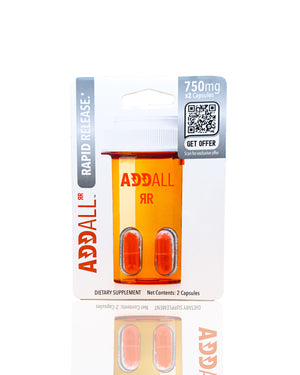
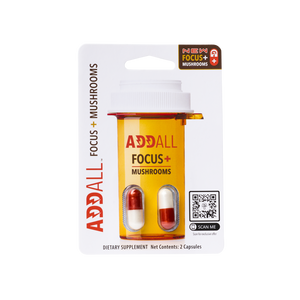

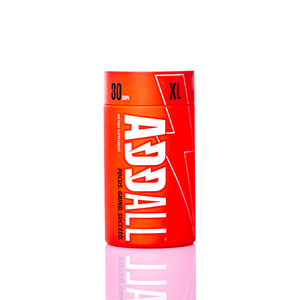
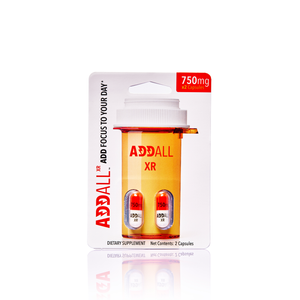

 Addall XR
Addall XR
 Addall XL
Addall XL
 Addall
Addall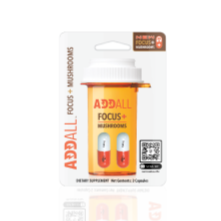 Addall
Addall Addall
Addall
 Compare
Compare




















































